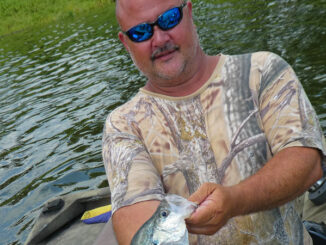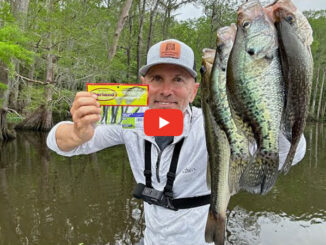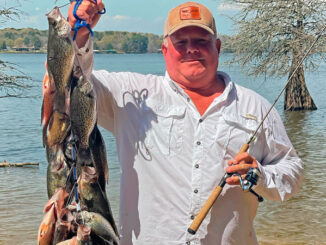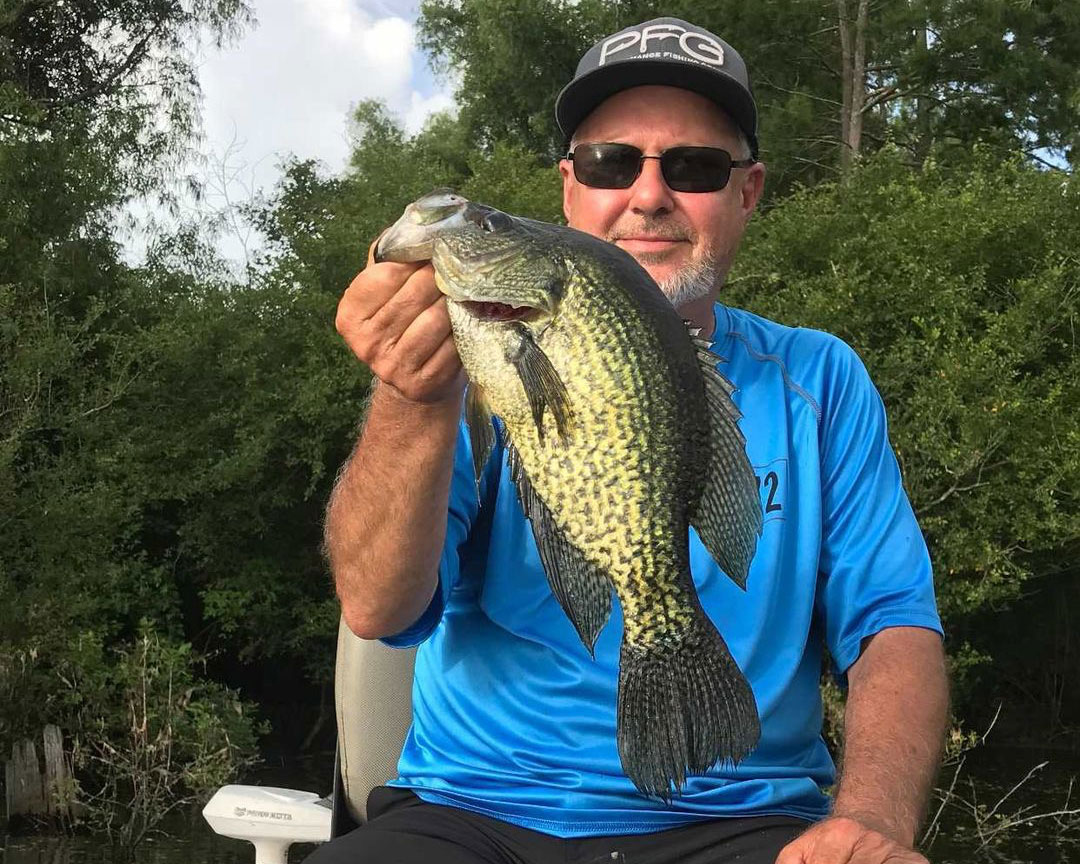
Shane Stelly, 53, has been fishing the Atchafalaya Basin for sac-a-lait since he was a small boy. “I’m from Cecilia, Louisiana and the Basin is my backyard,” he said.
Stelly’s father taught him to fish at a young age. “I remember going to school on Monday morning, and my desk rocking like I was still on the boat,” Stelly said. Even today, “(after hours of fishing), I’ll blink my eyes, and see my cork going in the water,” he said, laughing.
From father to son
Just as his father taught him to fish during early childhood, Stelly is proud to pass on the tradition to his own ten-year old son, Sean. “He’s been fishing with me since he was 5 years old,” Stelly said. “I tell him, ‘When you’re 15 or 16, kids your age won’t know how to do this.’”
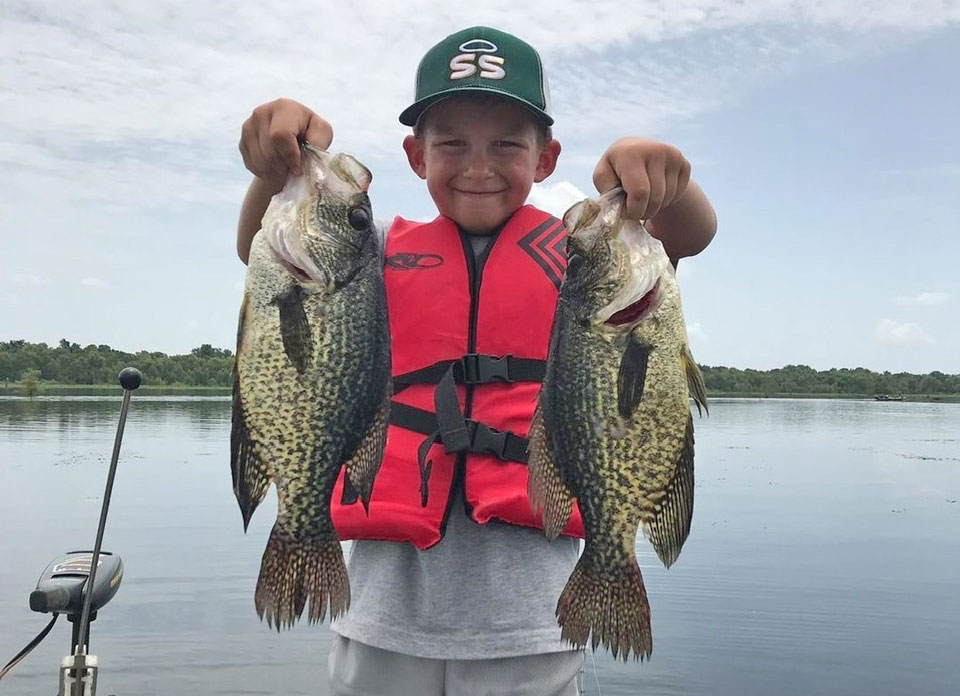
This time of year, with water temperature rising as water levels fall, the crappie are in deeper water. “In the springtime, we fish the cypress trees and the willow trees, and catch them 2 to 3 feet deep, but (now) we’re fishing drop-offs, laydowns, brush piles and so forth,” said Stelly.
“The fish in the pictures (I sent) were caught in backwater lakes off the Atchafalaya River under corks,” he said. “These backwater swamps produce big fish certain times of the year when the river is high enough for them to get in.
“In early summer, I use a lot of hair jigs, but in late summer, I start fishing with tube jigs; my favorite colors are black and chartreuse with an orange head on days when the sun’s out and blue and white with a pink head (when it’s cloudy).”
Things to consider
One key factor is water quality. “Water color is very important when fishing in the Basin; you want water that’s not muddy, but not black and clear, either,” he said. “I like water that’s somewhere between a green and a milky root beer color.”
Pay attention to what the baitfish are doing; anything that makes them active is good. Stelly recommends fishing falling water for that reason. “I (also) like to fish off points with a good wind current, because the wind current makes the baitfish active,” he said. “When you’ve got a lot of active baitfish, you’ve got a lot of active feeding fish.”
“I like to fish early mornings and late afternoons,” Stelly said. But moon phases and other factors inform his decision-making about when to fish.
“You’ve also got to remember that every day is different,” he said. Each day on the water, adapt your methods to the conditions you find.
“People call me and ask where the fish are biting, when (the reality is that) I can go to a spot one day and do very well, and return to the same spot the next day, and do very poor,” Stelly said. “You must adjust and adapt and not be afraid to try something new; I have tons of jigs and baits that I’m willing to try.”
